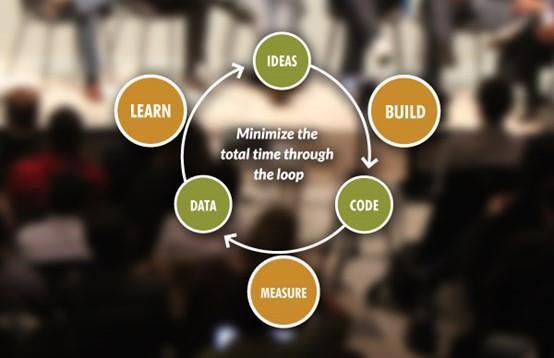
The Lean Start-Up Method, popularized by Eric Ries in his 2011 book Lean Startup, is a business philosophy designed to help start-ups focus on their products and services through a build, measure, learn approach. At the heart of lean thinking is to focus on creating value for your company, your employees, your product or service and your consumers in a time-efficient and cost-effective way. I have used this method to revolutionize the way entrepreneurs think about my company and its products.
The MVP is central to what people call a build-measure-learn loop that mimics the scientific method for testing a business idea or the evolution theory. The assumptions are unproven with the lean startup method : the belief that you can make your plan work, for example, the belief that people will pay for the new product, and the belief that they will use it. You can use MVPs to test assumptions about your product to reduce the risk that you spend time and money on the wrong thing.
In the early stages of Lean Startup Methodology, founders are encouraged to start with a business hypothesis, an educated assumption that outlines how their product will generate value for their customers. The hypothesis is designed to allow research to take months, offering potential savings for the first time. In order to successfully implement the methodology, companies that use the methodology concentrate on developing a product and obtaining customer feedback, including bringing a viable product to a small group of your customers.
The goal of Lean Startup methodology is to eliminate wasteful practices in the early stages of the company to give it the best chance for long-term success. Using this methodology, it is possible for early-stage start-ups to succeed without the need for large financial resources, a comprehensive business plan or a flawed product.
Instead of building complex plans based on many assumptions, the Lean Start-Up approach encourages new companies to constantly adjust their product lines. Instead of using rigid rules, it introduces key principles that entrepreneurs can use as guidelines to approach the construction of a product with a broader vision. With the Lean Startup Methodology, successful companies that use this method must focus on obtaining customer feedback on the original product.
The Lean approach includes 3 essential principles:
Entrepreneurs accept that untested hypotheses are everything they have on day one. The founders summarize these hypotheses in the business model canvas that let us look at all nine building blocks of the business on one page.
Lean startups use customer development to test their hypotheses. It’s about feedback on all elements of the business model. During customer development, startups search for a business model that works. Every stage of customer development is iterative.
Lean startups practice Agile development that eliminates wasted time and resources by developing the product iteratively and incrementally. The method results in fewer failures than using traditional methods.
The traditional approach instructs entrepreneurs to develop their products in stealth mode. According to the traditional idea, entrepreneurs develop a multi-annual business plan and use it to raise money to finance product development activities.
Lean start-ups use a building approach called customer development to test their hypotheses. They go so far as to ask potential users, buyers and partners for feedback on all elements of the business model including product features, pricing, distribution channels and affordable customer acquisition strategies. Third, they do so through a practice called agile development, which has its origins in the software industry.
A typical years-long product development cycle requires knowledge of customer problems and product needs, while agile development removes wasted time and resources in product development. Large companies spend thousands of dollars on bloated R & D cycles and miss out on market opportunities by trying to bring a new product to market too quickly. By applying a lean startup methodology to the workflow of your innovation and R & D teams, a product can be delivered to customers at lower cost per iteration, reducing overhead, and generating incremental gains that lead to higher profits.
Lean Startup is a method of developing business products that aims to shorten the product development cycle by identifying a proposed business model that is workable and which can be achieved through a combination of business hypotheses-based experiments, iterative product releases and validated learning. Lean startups value customer feedback, intuition, flexibility and planning. A lean start-up enables a faster recovery from failure than the traditional way of developing products, unlike traditional product development, where the phases are linear and take months, agile development builds a product in a short, repetitive cycle.
Your business starts by generating demand for your product and implementing a sales process to sell and deliver it on a large scale. Many start-ups spend many years and a lot of money building a product and then conducting a survey of customers who need the product.
No matter what type of business you start or build, you will face many setbacks, challenges and obstacles of all kinds. Whatever you follow the traditional idea of writing a business plan, appealing to investors, building and selling your product or for years on a business idea will fail.
